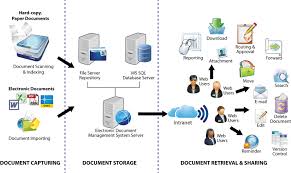Exploring the World of Java App Development: Building Powerful Applications with Java
The Power of Java App Development
Java is a versatile and powerful programming language that has been widely used for developing various types of applications, including web, mobile, and enterprise applications. With its platform independence, robustness, and scalability, Java has become a popular choice among developers for building reliable and secure software solutions.
Benefits of Java App Development
Platform Independence: One of the key advantages of Java is its platform independence. Java applications can run on any device or operating system that has a Java Virtual Machine (JVM) installed, making them highly portable.
Robustness: Java’s strong type system and exception handling mechanisms make it a robust programming language that can handle errors effectively, ensuring the stability and reliability of applications.
Scalability: Java’s scalability allows developers to build applications that can easily accommodate growing user bases and increasing workloads without compromising performance.
Use Cases of Java App Development
Java is commonly used in various industries for developing different types of applications:
- Enterprise Applications: Many large organizations use Java for building enterprise-level software solutions such as customer relationship management (CRM) systems, enterprise resource planning (ERP) software, and more.
- Web Applications: Java is widely used for creating dynamic and interactive web applications using frameworks like Spring and Hibernate.
- Mobile Applications: With technologies like Android Studio and Kotlin, developers can build cross-platform mobile apps using Java.
- Data Processing Applications: Java is also popular for developing data processing applications due to its performance and scalability features.
The Future of Java App Development
As technology continues to evolve, the future of Java app development looks promising. With the introduction of new features in the latest versions of Java, such as modularity with Project Jigsaw and enhanced performance with GraalVM, developers can expect even greater capabilities and efficiencies in building innovative software solutions.
Top 8 FAQs About Java App Development
- Can I create an app with Java?
- Is Java good for application development?
- Is Java good for iOS app development?
- Can Java build iOS apps?
- Is Java or Python better for app development?
- Do people still use Java for Android?
- Can I develop an app using Java?
- Can I still build Android apps in Java?
Can I create an app with Java?
Yes, you can create a wide range of applications using Java. Java is a versatile programming language that allows developers to build various types of software, including web, mobile, and enterprise applications. With its platform independence and robust features, Java is well-suited for developing reliable and scalable apps. Whether you are looking to create a web application, a mobile app for Android devices, or an enterprise-level software solution, Java provides the tools and capabilities needed to bring your ideas to life.
Is Java good for application development?
Java is widely regarded as an excellent choice for application development due to its numerous advantages. With its platform independence, robustness, and scalability, Java offers developers a versatile and reliable environment for building a wide range of applications. Its platform independence allows Java applications to run on various devices and operating systems with ease. The language’s strong type system and exception handling mechanisms contribute to the robustness of Java applications, ensuring stability and error management. Additionally, Java’s scalability enables developers to create applications that can grow with user demand without sacrificing performance. Overall, Java’s versatility and capabilities make it a strong contender for application development across different industries and use cases.
Is Java good for iOS app development?
Java is not typically used for iOS app development. While Java is a popular programming language for building Android apps, iOS development primarily relies on languages like Swift or Objective-C. Apple’s iOS ecosystem has its own set of development tools and frameworks that are specifically designed for creating applications that run on iOS devices. Therefore, if you are looking to develop apps for the iOS platform, it is recommended to use Swift or Objective-C to leverage the native capabilities and features of iOS devices effectively.
Can Java build iOS apps?
In the realm of Java app development, a common inquiry revolves around the possibility of using Java to build iOS apps. While Java is a versatile and powerful programming language, it is not typically used for directly creating iOS applications. iOS apps are primarily developed using Apple’s official programming language, Swift, or Objective-C. However, developers can explore cross-platform development tools like Xamarin or React Native to write code in Java and deploy it on multiple platforms, including iOS. By leveraging these frameworks, developers can achieve some level of code reusability across different operating systems while still catering to the specific requirements of iOS app development.
Is Java or Python better for app development?
When it comes to app development, the choice between Java and Python often depends on the specific requirements of the project. Java is known for its platform independence, robustness, and scalability, making it a popular choice for building enterprise-level applications and web services. On the other hand, Python is favored for its simplicity, readability, and versatility, particularly in data science, machine learning, and rapid prototyping. Ultimately, the decision between Java and Python for app development should consider factors such as project complexity, performance needs, existing codebase compatibility, and developer expertise in each language. Both Java and Python have their strengths and can be valuable tools depending on the context of the application being developed.
Do people still use Java for Android?
Yes, Java is still widely used for Android app development. Despite the introduction of Kotlin as an official language for Android development by Google, many developers continue to rely on Java due to its familiarity, robustness, and extensive ecosystem of libraries and tools. Java remains a popular choice for building Android apps, especially for developers who have already invested time and effort in mastering the language. Additionally, Java’s platform independence and compatibility with various devices make it a versatile option for creating high-quality mobile applications on the Android platform.
Can I develop an app using Java?
Yes, you can develop an app using Java. Java is a versatile and widely-used programming language that is well-suited for building various types of applications, including web, mobile, and enterprise applications. With its platform independence and robust features, Java provides developers with the tools they need to create reliable and scalable software solutions. Whether you are looking to develop a web application, a mobile app, or an enterprise-level system, Java offers the flexibility and power to bring your ideas to life.
Can I still build Android apps in Java?
Yes, developers can still build Android apps in Java. While Google introduced Kotlin as an official language for Android app development, Java remains a supported and widely used language for creating Android applications. Many developers are already familiar with Java and have existing codebases written in Java, making it a practical choice for building Android apps. Additionally, the Android SDK fully supports Java, allowing developers to leverage its features and libraries to create robust and feature-rich applications for the Android platform.











